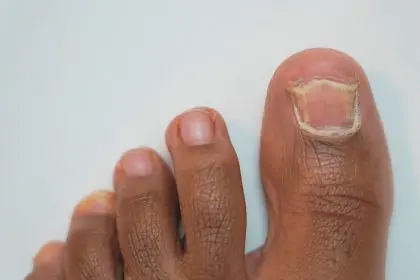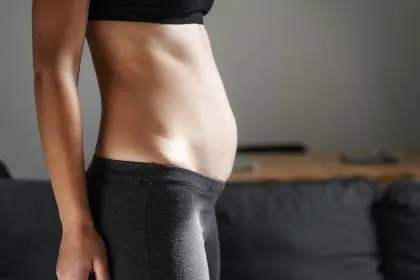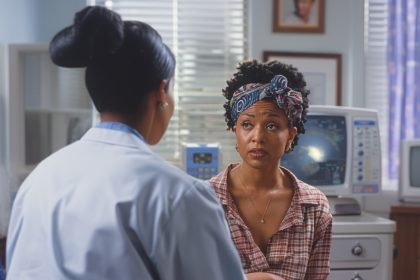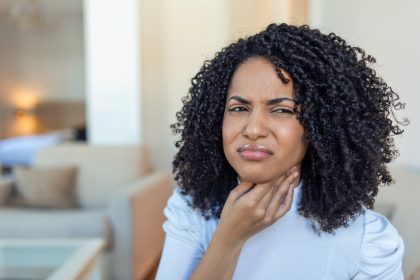As we age, our eyes undergo numerous changes that can affect both appearance and function. While some eyelid changes are simply cosmetic concerns, others may signal serious underlying health conditions that require immediate medical attention. Understanding the difference between normal aging and problematic symptoms can help protect your vision and overall health.
The delicate skin around your eyes is among the first areas to show signs of aging, but certain changes should never be dismissed as simply getting older. Recognizing these warning signs early can make the difference between successful treatment and permanent complications.
Understanding normal aging changes
Before identifying concerning symptoms, it’s important to understand what constitutes normal aging around the eyes. The skin naturally becomes thinner and less elastic over time, leading to fine lines and wrinkles. The muscles that support the eyelids also weaken gradually, which can cause mild drooping or a tired appearance.
Fat deposits may shift or diminish, creating hollow areas or puffiness that wasn’t present in younger years. These changes typically develop slowly over many years and don’t interfere with vision or daily activities. However, when changes occur rapidly or affect your ability to see clearly, they warrant medical evaluation.
1. Sudden drooping of one or both eyelids
While gradual eyelid drooping is common with age, sudden or severe drooping can indicate serious neurological problems. This condition, known as ptosis, becomes concerning when it develops quickly or affects your field of vision significantly.
Rapid onset drooping may signal nerve damage, muscle disorders, or even stroke-related complications. If the drooping is accompanied by double vision, difficulty speaking, or weakness on one side of the face, these symptoms require immediate emergency medical attention.
Even gradual drooping warrants evaluation if it interferes with your ability to drive safely, read comfortably, or perform daily activities. The underlying cause may be treatable, and addressing it early can prevent further complications.
2. Persistent swelling and puffiness
Occasional puffiness around the eyes is normal, especially upon waking or after consuming salty foods. However, persistent swelling that doesn’t improve with rest, elevation, or cold compresses may indicate underlying health issues.
Chronic eyelid swelling can signal thyroid disorders, kidney problems, or autoimmune conditions. The swelling may be accompanied by changes in the eye’s appearance, such as bulging or redness, which can further complicate the situation.
If swelling persists for more than a few days or is accompanied by vision changes, pain, or discharge, medical evaluation is necessary to rule out serious conditions and prevent potential complications.
3. Changes in eyelid color or texture
The skin around your eyes should maintain a relatively consistent color and texture throughout your life. Sudden changes in pigmentation, such as darkening or unusual discoloration, may indicate circulation problems or other health concerns.
Thickening, scaling, or rough patches on the eyelids can signal skin conditions that require treatment. These changes may also indicate allergic reactions or infections that could spread to other areas if left untreated.
Any new growths, bumps, or lesions on the eyelids should be evaluated promptly, as they may represent precancerous or cancerous changes that require immediate intervention.
4. Eyelid twitching that won’t stop
Occasional eyelid twitching is usually harmless and related to stress, caffeine, or fatigue. However, persistent twitching that continues for weeks or months may indicate neurological issues or muscle disorders.
Severe twitching that affects your ability to keep your eyes open or interferes with vision requires medical attention. This type of involuntary muscle movement can sometimes be treated effectively if diagnosed early.
If twitching is accompanied by other symptoms such as facial spasms, difficulty controlling eye movements, or changes in vision, these signs warrant immediate evaluation by a healthcare provider.
5. Eyelids that turn inward or outward
Normal aging can cause slight changes in eyelid position, but dramatic turning inward or outward of the eyelid margin is problematic. When eyelids turn inward, the lashes can scratch the eye surface, causing irritation and potential damage.
Outward-turning eyelids can leave the eye inadequately protected, leading to dryness, irritation, and increased risk of infection. Both conditions can worsen over time if not addressed properly.
These positional changes often respond well to treatment when caught early, but delayed intervention can result in permanent damage to the eye surface or changes in vision.
6. Difficulty closing eyes completely
The ability to close your eyes completely is essential for eye health and comfort. If you notice that you can’t fully close one or both eyes, this may indicate nerve damage or muscle weakness that requires evaluation.
Incomplete eye closure can lead to severe dryness, irritation, and increased risk of eye infections. The exposed eye surface may become damaged over time, potentially affecting vision permanently.
This symptom is particularly concerning if it develops suddenly or is accompanied by facial weakness, as it may indicate nerve damage that could worsen without proper treatment.
7. Excessive tearing or dry eyes
While some changes in tear production are normal with aging, extreme dryness or excessive tearing can signal problems with the tear ducts or glands around the eyes.
Chronic dry eyes can lead to discomfort, increased infection risk, and potential damage to the eye surface. Conversely, excessive tearing may indicate blocked tear ducts or other drainage problems.
Both conditions can significantly impact quality of life and may worsen over time without appropriate treatment. Early intervention can often provide relief and prevent complications.
8. Vision changes accompanying eyelid problems
Any eyelid changes that coincide with vision problems require immediate attention. This includes double vision, blurred vision, loss of peripheral vision, or difficulty focusing.
The combination of eyelid changes and vision problems may indicate serious conditions affecting the nerves, muscles, or other structures around the eyes. These symptoms may also signal systemic health issues that require comprehensive evaluation.
Never ignore vision changes, especially when they occur alongside eyelid problems, as prompt treatment may prevent permanent vision loss.
When to seek immediate help
Certain combinations of symptoms require emergency medical attention. Seek immediate help if you experience sudden eyelid drooping with facial weakness, severe eye pain with vision changes, or any symptoms that suggest stroke or other neurological emergencies.
Additionally, any rapidly progressing eyelid changes, especially those accompanied by vision problems, warrant urgent evaluation to prevent potential complications.
Taking action for your eye health
Regular eye examinations become increasingly important as we age, even when no obvious problems are present. Many serious eye conditions can be detected and treated successfully when caught early, but may cause permanent damage if allowed to progress.
Don’t dismiss eyelid changes as simply part of getting older. While some changes are indeed normal, others may signal treatable conditions that can significantly impact your quality of life and vision if left unaddressed.

















